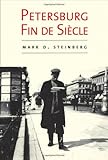Support H-Net | Buy Books Here | Help Support the NBN and NBN en Español on Patreon | Visit New Books Network en Español!
- African Studies
- African American Studies
- American Politics
- American Studies
- American South
- American West
- Asian American Studies
- Australian and New Zealand Studies
- British Studies
- Canadian Studies
- Caribbean Studies
- Central Asian Studies
- Chinese Studies
- East Asian Studies
- Eastern European Studies
- European Politics
- French Studies
- German Studies
- Iberian Studies
- India Studies
- Indian Ocean World
- Iranian Studies
- Irish Studies
- Israel Studies
- Italian Studies
- Japanese Studies
- Korean Studies
- Latino Studies
- Latin American Studies
- Mexican Studies
- Middle Eastern Studies
- Native American Studies
- Pacific Studies
- Polish Studies
- Russian and Eurasian Studies
- Southeast Asian Studies
- South Asian Studies
- Turkish Studies
- Ukrainian Studies
- Western European Studies
- World Affairs
- Animal Studies
- Anthropology
- Archaeology
- Business, Management, and Marketing
- Media
- Critical Theory
- Disability Studies
- Drugs, Addiction and Recovery
- Education
- Economics
- Finance
- Geography
- Gender Studies
- Genocide Studies
- Higher Education
- Human Rights
- Journalism
- Language
- Law
- LGBTQ+ Studies
- National Security
- Philanthropy
- Philosophy
- Policing, Incarceration, and Reform
- Political Science
- Politics & Polemics
- Public Policy
- Sex, Sexuality, and Sex Work
- Sociology
- Sound Studies
- Sports
- Urban Studies
- Big Ideas
- Celebration Studies
- Co-Authored
- Cover Story
- Historical Materialism
- History Ex Silo
- Interpretive Political and Social Science
- Invested Investor
- Landscape Architecture
- Late Antiquity
- Mormonism
- NBN Book of the Day
- NBN Seminar
- Postscript: Conversations on Politics and Political Science
- Practical History
- Preparing for Life After Grad School
- Psychology and Climate Change
- Syriac Studies
- The Chair: In The Room at the Fed
- New Books with Miranda Melcher

Mar 22, 2012
The Stalin Cult
A Study in the Alchemy of Power
Summary
Jan Plamper begins in his book, The Stalin Cult: A Study in the Alchemy of Power (Yale University Press, 2012), with two illuminating anecdotes that demonstrate the power and scope of Stalin's personality cult. The first comes from Sergei Kavtaradze, an Old Bolshevik and longtime friend of Stalin. Upon his release from the gulag in 1940, Stalin and Beria accompanied Kavtaradze to his old apartment, which was then occupied by an old woman. When he woman saw Stalin at her door she staggered back and fainted. When Beria asked why she was scared by the "father of all peoples," the woman replied, "I thought that a portrait of Stalin was moving towards me."
The second tale comes from Artyom Sergeev, Stalin's adopted son. Sergeev recalled one night when Stalin learned that his biological son, Vasily, used his famous name to escape punishment from one of drunken binges. In response to Stalin's rage, Vasily said, "But I'm a Stalin too." "No you're not," Stalin rebuffed. "You're not Stalin and I'm not Stalin. Stalin is Soviet power. Stalin is what he is in the newspapers and the portraits, not you, not even me!"
The production of the Stalin personality cult that disembodied the man and turned him into a symbol of Soviet power is at the heart of Plamper's text. The cult made Stalin more than a leader--it transformed him into the Archimedean point of historical time and space. For Stalin represented the communist future as well as the vantage point in the socialist present. At the heart of this cult was Stalin's image, which was reproduced in a variety of media, including portraiture and film. But the crafting, production, and canonization of Stalin's image was no simple endeavor. It involved technologies that gave Stalin's cult a particularly modern flavor. As Plamper shows, the production and dissemination of Stalin's cult, which began in earnest with his 50th birthday in 1929, involved an entire institutional apparatus including mass media, artistic unions, art criticism, artistic competitions, individual filters, particularly Stalin's secretaries Lev Mekhils and Aleksandr Poskryobyshev, and art patrons like Defense Minister Kliment Voroshilov, on top of which stood Stalin at the apex. Indeed, Stalin's personal role in crafting his cult has undergone much debate. Plamper finds that it is best to view Stalin's relationship to his cult as a form of "immodest modesty." Stalin wanted his own cult and meticulously controlled it, at the same time he purposefully disavowed it. And through this alchemy of institutional and individual power did Stalin's personality cult penetrate the psyche of the Soviet citizenry.
This interview with Jan Plamper is part of joint project with Russian History Blog. Please visit Russian History Blog beginning March 28 to join a discussion among several scholars on the significance of The Stalin Cult: A Study in the Alchemy of Power.



































































































